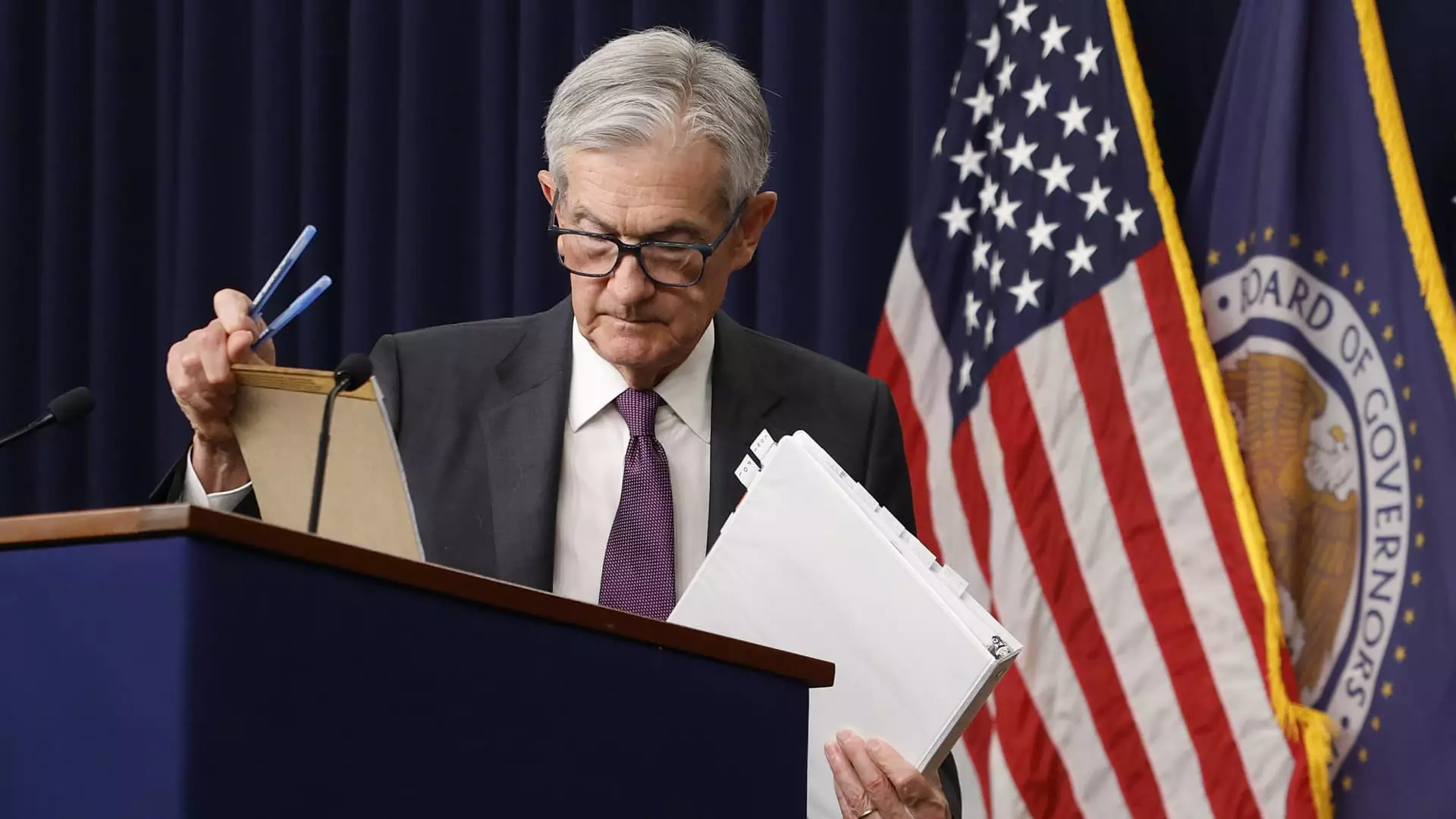In a world where economic indicators swing wildly like a pendulum, Federal Reserve Chair Jerome Powell’s recent address highlighted the precarious balancing act the central bank faces. With President Trump’s trade policies looming over the markets, Powell’s acknowledgement of a potential clash between inflation and growth illustrates a troubling trend in economic governance. His speech was laced with concerns about the ramifications of tariffs—not just as a temporary nuisance but as a potential harbinger of enduring economic shifts.
As Powell pointed out, the dual mandate of the Fed—to maximize employment while maintaining stable prices—might reach a breaking point. This entanglement often leads economists into a state of paralysis. If this inflation-growth tug-of-war remains unresolved, it may not merely result in a sluggish economy but could lead to aggravating cycles of recession and inflation that unsettle households and investors alike.
The Tariff Tango: A Tax on Opportunity
Tariffs present themselves as more than just trade barriers; they act as a tax on imports. This complicates the already fragile relationship between inflation and growth, as acknowledged by Powell. The multifaceted impacts of tariffs are not confined to merely augmenting prices. Consumers, businesses, and economic health are intricately connected through a web of supply chains that experience disruption or inflationary pressure, sometimes simultaneously.
While the Fed has historically perceived tariffs as a singular, short-lived economic impact, the reality of ongoing trade tensions under the Trump administration paints a more complex picture. Powell affirmed that the broader implications of tariffs could extend their inflationary effects beyond the immediate horizon—a reality that could force the Fed into firefighting mode. Every rise in price tags not only shrinks consumers’ purchasing power but chips away at the consumer confidence that fuels economic growth.
Interest Rates: The Fed’s Double-Edged Sword
In the face of potential inflationary pressures, Powell remains non-committal on interest rate adjustments, claiming that the Fed is poised to await greater clarity before any shifts in policy stance. However, this ‘wait and see’ approach may not merely reflect caution; it might hint at a struggle to maintain credibility in the eyes of the markets. Economic theory teaches us that raising interest rates can dampen inflation—but doing so in the midst of sluggish growth could sometimes yield paradoxical outcomes that throw further fuel on the fire of economic discontent.
The markets echo Powell’s uncertainty, reacting negatively as he spoke. Stocks dipping and Treasury yields falling reflect a broader apprehension about the Fed’s next steps in navigating this turbulent economic landscape. The central bank may soon find itself at a fork in the road, where the ghosts of inflation loom large over the prospect of fostering growth.
Data Dilemmas: What the Numbers Reveal
Numbers can be beguiling. Powell’s reference to the anticipated GDP slowdown in the first quarter reveals how the data suggest a stagnant economic environment, driven in part by preemptive consumer spending due to looming tariffs. Retail sales surged with an unexpected 1.4% increase in March, yet much of that growth appears deceptively tied to anticipation rather than sustained consumer confidence.
Businesses maneuvering around tariffs may temporarily inflate consumer spending but ultimately fail to lay a robust foundation for long-term growth. Powell’s observation that consumer spending is stagnant, even with reported gains, exemplifies the dichotomy at play: while short-term spikes may provide comfort, they also mask an underlying fragility threatening to unravel.
A Strained Economic Outlook
As Powell continues to sound alarms over the volatile economic landscape, it is essential to consider the broader ramifications of monetary policy and fiscal responsibility. While Powell described the economy as in a “solid position,” this could easily be a façade. The impending threat from weakened growth rates, coupled with rising inflation expectations, places the Fed at an impasse that could spiral into a crisis if not judiciously managed.
The Fed’s commitment to anchoring inflation expectations is laudable, yet disdain for short-sighted policies that tout significant fluctuations without carefully weighing immediate consequences could further entrench America in a precarious economic labyrinth. With Powell expressing hesitance in the face of complex data, one must wonder if the dual mandates of the Fed could ultimately lead to a repeat of previous economic blunders.
The struggle between inflation and growth that Powell outlines is not simply a statistical dilemma. It encapsulates the broader human experience: the quest for security in an increasingly unpredictable world, weighed down by decisions that reverberate through every tier of the economy. If the Fed fails to strike this critical balance, the repercussions could be felt for generations to come.

Leave a Reply